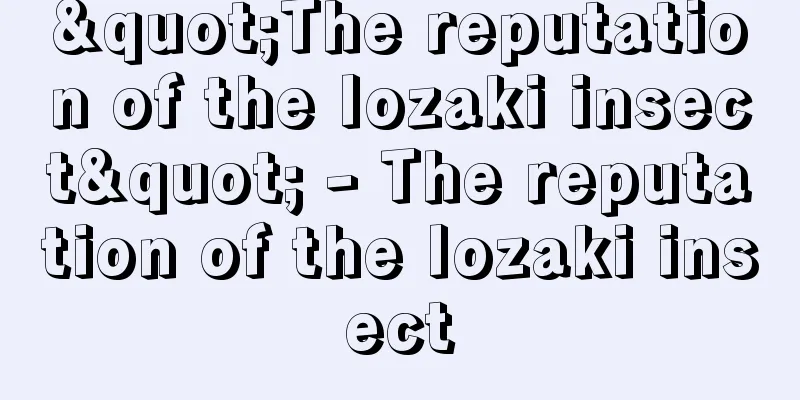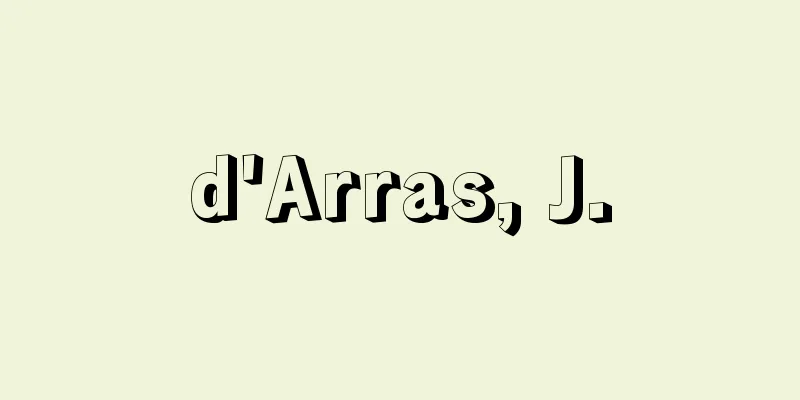Santoukyouden - Santoukyouden

|
He was an author of kibyōshi, gokan, sharebon, and yomihon (reading books) from the late Edo period, and an ukiyo-e artist. He was born on August 15, 1761, in Kiba, Fukagawa, Edo, as the eldest son of Iwase Denzaemon. His real name was Iwase Samuru, and he was commonly known as Kyoya Denzō, and he used the name Sankyōden , meaning that he lived in Ginza 1-chōme, Kyobashi, east of Momijiyama . His other pen names included Santoan, Kikutei Shujin, Seisai, Seisei Rojin, and Migaru no Orisuke in kyōka. At around the age of 14 or 15, he became a disciple of the ukiyo-e artist Kōsuisai and Kitao Shigemasa, and took the names Rissai and Kitao Masanobu. In 1778 (An'ei 7), he worked as an artist for the yellow-covered book "Kaichouryaku no Mekuriai" (The Game of Opening Profit Cards) (written by Shachodo Shotsuhenjin), which led him to turn his attention to comical writing, and with his work "Gozonji no Shobaimono" (1782) he suddenly came into the limelight as a yellow-covered book author. He was one of the central comic writers of the Tenmei and Kansei periods (1781-1801) along with samurai writers such as Hoseidou Kisanji, but in 1891 (Kansei 3) he was handcuffed for 50 days for his joke trilogy "Nishiki no Ura," "Shikake Bunko," and "Shogi Kinu Burui." After that, he broke new ground as a reader, and during the Kyowa and Bunka periods (1801-1818) he was the only writer who could rival Kyokutei Bakin, and he also left behind a number of famous historical essays. His representative works include the yellow-covered books "Edo Mare Uwaki no Kabayaki" (1785) and "Shingaku Hayasomegusa" (1790), as well as the sharebon books "Tsūgen Somagaki" (The General Fence), "Kokei no Sanshō" (The Three Prostitutes of Ancient Politics) (both 1787), "Shige Shigechiwa" (A Thousand Tales), and "Kyosei Kai Shijuhachi" (The Forty-Eight Tales of a Beautiful Woman). His works include "Keiseikaishijuuhatte" (both 1790), his readings include "Suikoden" (the first part 1799, the second part 1801) and "Mukashigatari Inazumabyōshi" (1806), and his essays include "Thoughts on Modern Miracles" (1804) and "Kottoshū" (Collection of Antiques) (1814, 1815). He was also a first-rate artist, and his representative work is the colored picture book "Shinbijin Awaseji Hitsukagami" (1784), as well as the humorous picture book "Komon Shinpo" (1786). His influence extended to Jippensha Ikku, Shikitei Sanba, Tamenaga Shunsui, and others. His younger brother was Yamato Tōkyōzan, the author of the gomanki collection. He died on September 7, 1810. He is buried at Ekoin Temple in Honjō. [Masahiro Tanahashi] "Japanese Classical Literature Series 59: Yellow-covered Books and Sharebon Collections, edited by Mizuno Minoru (1958, Iwanami Shoten)" ▽ "Koike Togoro's Santokyoden (1961, Yoshikawa Kobunkan)" ▽ "Santokyoden and His Works" (included in Mori Senzo Works Collected 1, 1970, Chuokoron-Shinsha)" ▽ "Illustrated Japanese Classics 18: Kyoden, Ikku, Shunsui (1980, Shueisha)" [Reference] | | |Painting of the Shandong Chicken Propagation by Santo Kyoden, published in 1787 (Tenmei 7), held at the National Diet Library "Tsūgen Sohri" Painted by Kitao Seien (Sankyoden), preprinted in 1784 (Tenmei 4), owned by the National Diet Library . "New Beauty Handwritten Mirror" Source: Shogakukan Encyclopedia Nipponica About Encyclopedia Nipponica Information | Legend |
|
江戸後期の黄表紙・合巻(ごうかん)・洒落本(しゃれぼん)・読本(よみほん)作者、浮世絵師。宝暦(ほうれき)11年8月15日、岩瀬伝左衛門の長子として江戸・深川木場に生まれる。本名岩瀬醒(さむる)、通称京屋伝蔵、紅葉(もみじ)山の東にあたる京橋銀座一丁目に住居する伝蔵の意で、山東京伝の号を用いる。ほかに山東庵(あん)、菊亭主人、醒斎(せいさい)、醒々老人、狂歌には身軽折介(みがるのおりすけ)などの号がある。14、15歳ごろに浮世絵師紅翠斎(こうすいさい)北尾重政(しげまさ)の門に入り、葎斎(りっさい)北尾政演(まさのぶ)を名のる。1778年(安永7)黄表紙『開帳利益札遊合(かいちょうりやくのめくりあい)』(者張堂少通辺人(しゃちょうどうしょうつうへんじん)作)の画工を務めたことから戯作(げさく)に筆を染め、『御存商売物(ごぞんじのしょうばいもの)』(1782)で一躍黄表紙作者として脚光を浴び、恋川春町(こいかわはるまち)、朋誠堂喜三二(ほうせいどうきさんじ)らの武家作者と並び天明(てんめい)・寛政(かんせい)期(1781~1801)の中心的戯作者の地位を占めるが、91年(寛政3)に洒落本三部作『錦之裏(にしきのうら)』『仕懸(しかけ)文庫』『娼妓絹籭(しょうぎきぬぶるい)』で手鎖(てぐさり)50日の筆禍にあった。そののちは読本作者として新天地を開き、享和(きょうわ)・文化(ぶんか)年中(1801~1818)には曲亭馬琴に対抗しえたただ1人の作家であり、かたわら考証随筆にも名著を残している。その代表作には、黄表紙に『江戸生艶気樺焼(えどうまれうわきのかばやき)』(1785)・『心学早染草(しんがくはやそめぐさ)』(1790)、洒落本に『通言総籬(つうげんそうまがき)』・『古契三娼(こけいのさんしょう)』(ともに1787)・『繁千話(しげしげちわ)』・『傾城買四十八手(けいせいかいしじゅうはって)』(ともに1790)、読本に『忠臣水滸伝(すいこでん)』(前編1799、後編1801)・『昔語稲妻表紙(むかしがたりいなづまびょうし)』(1806)、随筆に『近世奇跡考』(1804)・『骨董集(こっとうしゅう)』(1814、1815)などがある。 絵師としての力量も一流であり、彩色絵本『新美人合自筆鏡(しんびじんあわせじひつかがみ)』(1784)はその代表的な作品で、滑稽(こっけい)絵本に『小紋新法(こもんしんぽう)』(1786)などもある。その影響は十返舎一九(じっぺんしゃいっく)、式亭三馬、為永春水(ためながしゅんすい)らにも及んでいる。実弟に合巻作者山東京山がいる。文化13年9月7日没。本所回向院(えこういん)に葬る。 [棚橋正博] 『水野稔校注『日本古典文学大系59 黄表紙・洒落本集』(1958・岩波書店)』▽『小池藤五郎著『山東京伝』(1961・吉川弘文館)』▽『「山東京伝とその作品」(『森銑三著作集1』所収・1970・中央公論社)』▽『『図説日本の古典18 京伝・一九・春水』(1980・集英社)』 [参照項目] | | |山東京伝作 山東鶏告画 1787年(天明7)刊国立国会図書館所蔵"> 『通言総籬』 北尾政演(山東京伝)画 1784年(天明4)序刊国立国会図書館所蔵"> 『新美人合自筆鏡』 出典 小学館 日本大百科全書(ニッポニカ)日本大百科全書(ニッポニカ)について 情報 | 凡例 |
<<: Santosai (Shandong cabbage) - Santosai (English name) Brassica campestris L.var.amplexicaulis
Recommend
Median Tectonic Line
A fault that separates the inner and outer belts ...
Cape Sable
A cape at the southwestern tip of the Florida Peni...
Pomponia intermedia (English spelling)
…[Masami Hayashi]. . … *Some of the terminology t...
Raw white powder - Kioshiroi
...Ise powder became famous because the priests o...
Knee brace; angle brace
In buildings and bridges, a diagonal member is att...
Bibio albipennis (English spelling)
...A general term for insects belonging to the fa...
Company-specific negotiations
…The structure of collective bargaining varies de...
Hard rock
…On the other hand, in the 1960s, groups such as ...
Grotesque - Grotesque (English spelling)
Generally, it is an adjective meaning something b...
Genus: Motacillario
…the general term for birds belonging to the gene...
Health education
Health education or hygiene education is a genera...
Echigo Toji - Echigo Toji
Niigata sake. They offer daiginjo, junmai ginjo, j...
Educational Order - Kyoikurei
This law was promulgated on September 29, 1879 (M...
Project Andreas
…During World War II, Germany also attempted to d...
Communist Party of Vietnam (English: Dang Cong San Viet Nam)
A political party in the Socialist Republic of Vi...









